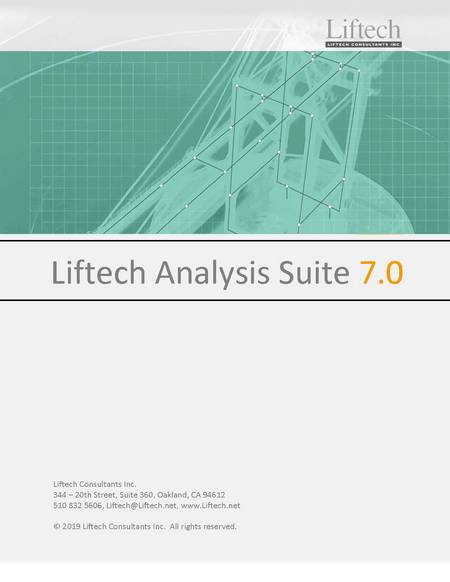
Liftech Analysis Suite (LAS) is a group of state-of-the-art programs used to analyze and design cranes and other complex structures. It performs both linear and non-linear analysis. The programs have been continuously developed since 1964 and are updated regularly. Many of the programs are specifically designed to facilitate analysis of crane structures.
CraneView, a graphical structure modeling module, can plot, check, and modify model geometry in 2D and 3D with the click of a button or with a text file. It also reads the analysis results and plots moment and shear diagrams as well as stress and fatigue interaction ratios. Graphics and other information produced by CraneView can be easily clipped into other active programs.
Load generators, LAS pre-processors, generate input files for loads such as dead load, wind load, moving load, and inertial loads such as seismic loads. Use of load generators helps significantly reduce the time for generating load input files. For example, they automatically generate moving load input data for varying moving load positions of the trolley along a crane girder runway.
StressFatigue, an LAS post-processor, checks stresses for each member by automatically finding and combining the controlling moving loads, angled wind, and reversing lateral loads and compares the calculated stress to the allowable stress. StressFatigue also checks fatigue stresses for the chosen load spectrum for almost all the modern fatigue codes such as BS 7608, EN 1993, EN 13001, and FEM, as well as AISC and AWS. StressFatigue identifies and documents the most severe force in each direction and moment about each axis, and presents the concurrent forces and moments, greatly facilitating connection design.
LAS also has other modules for special analysis, such as Wheel Load and Stability, which check the wheel loads and stability of the crane structure and other similar types of structures accounting for all specified load combinations and loading angles.
LAS features a consistent and intuitive user interface. All Windows editing features, such as copy and paste, can be used to transfer data between LAS and other programs.
LAS uses text files to bring flexibility in the creation and processing of the input and output data. It can be easily integrated with other structural analysis systems and equation solvers. Pre- and post-processors can be developed and added to LAS to suit special needs.
For more information about LAS, please download this PDF file.